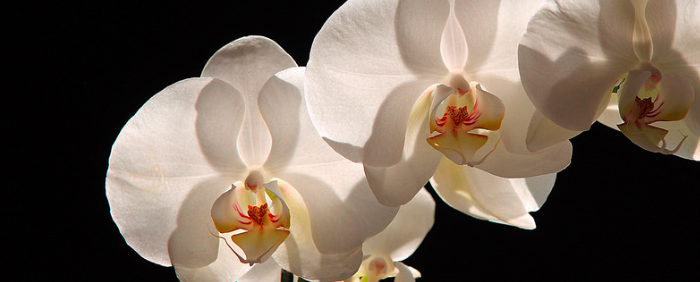
“The word Orchid comes from the Latin orchis with the influence of the Greek orkhidion – which means testicle”.
It seemed important to us to write an article about this detail, which is often overlooked!
But no, the subject here is to tell you more about Orchids , which are too often seen as “flowering plants”.
Some generalities – non-sexual but nevertheless fascinating – on orchids.
Orchids are champions of trade, not because they are a lucrative market, but because they attract symbiotic or saprophytic fungi on their roots. This allows them to adapt to environments where nothing else is able to grow, because they use the “symbiote” to “digest” in their place.
Orchids are a family of 25-30 000 species, mostly from tropical regions , about 80 million years old. Today this family is very widespread, with many species very adapted to a particular ecosystem . They are therefore very sensitive to environmental disturbances. There are orchids “aerial” – or epiphytes, like indoor orchids – that do not need to be planted in land and orchids “terrestrial” that are native to our regions.
That being said, what is the relationship with our indoor orchids?
Orchido-magnia is not new, it was already very intense in the nineteenth century. Cumulate the interest of horticulturists with orchid capacity for inter-species and inter-generational hybridization, and there are now too many hybrids of horticultural hybrids. But that’s mostly for collectors, because florists sell mostly varieties of Phalaenopsis and Cattleyas , which are the easiest kinds to reproduce and keep alive.
The orchid, champion of frustration for real gardeners!
Why does she frustrate many gardeners? Because you have to do as little as you can, which can cause an intense sense of worthlessness 😉
Contrary to some legends, commercial orchids – especially Phalaenopsis and Cattleya – are fairly easy to maintain . The legend of the difficult growing of orchids comes from the problems encountered by the first European horticulturists, and rare species of orchids for collectors.
But the “classic” orchids do not need almost anything: they are placed in the winter light , in the shade in the summer , they are watered – very little so that they do not rot – to non-calcareous waterThe leaves may be cleaned a little, given fertilizer once a month in season, and the dry parts removed. The biggest risk is to overdo it and disrupt symbiotic fungi with excessive inputs of water or fertilizer.
Often, we recommend repotting orchids. The idea is not so much to renew the substratum – which orchids do not need – but to prevent the roots from intertwining to the point of stagnating moisture – which makes them rot.
My orchid is alive, but I want FLOWER!
Yes, we often forget that the orchid is a living being that blooms for its own benefit, if it can. It is often preferred to place it in an exchange relationship of the type ” I give you care for you to give me flowers“. As if the absence of flowers affirmed some shameful negligence on the part of the owner or owner, the penalty is often rapid if the lazy one persists in not blooming anymore. ” She must be dead or sick, I throw it or give it to someone else “.
However, it is normal that sometimes your orchid stops blooming, it’s part of its cycle . How else could it form seeds?
We calm down, we breathe a great blow and let live … Already, many orchids measure the heat or more rarely the duration of the day to start their flowering. In the tropics they make sure the wet season is over. So, do not bother stuffing them with fertilizer to force them to bloom – they need a cooler period, or shorter days.
The signs to recognize to diagnose the state of his orchid.
- If the leaves of an orchid are elongated and dark green , you must move it to provide more light . This will not transform the already formed sheets, but you will have confirmation of progress if you see new leaves wider and “medium green”.
- On the contrary, if the leaves of your orchid are clear – even yellow – it is burned by the sun . Find a corner with less brightness.
- You see the basal leaves – these are the leaves at the base of the plant – to dry ? It’s normal , it’s the oldest. Even evergreen plants eventually drop their leaves – as they get older they become less and less effective. At one point you have to make room.
- Do your flowers eventually wither and fall ? This is normal , it is necessary that the plant remakes new leaves and roots from time to time. Once she is guaranteed new sources of energy supply, she can redo leaves because it can feed them. At this moment, a passage in a room less heated – 17 ° C is enough – will trigger a new flowering.
- We repeat ourselves, but watch the roots ! If some dry at the ends, it does not matter . On the other hand, if they rot … there you have a problem . It is necessary to stop the waterings, even to make an early repotting to ventilate them. Because otherwise the development of parasitic bacteria on the roots can spread and disrupt the symbiotic fungi, which will cause the death of the plant.
- Ideally you should never wet the heart of the orchid . That’s why many people prefer to soak the bottom of the pot in water, or spray on the leaves.